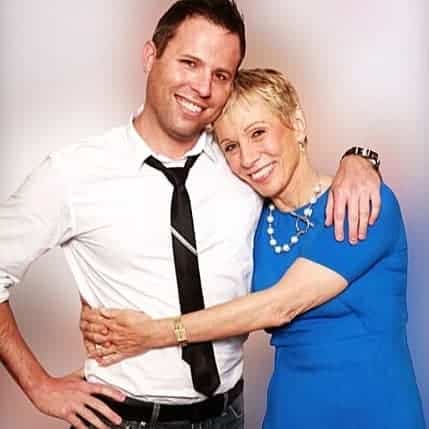Eli Wallach was a legendary American film, television, and stage actor.
Born on December 7, 1915 in Brooklyn, New York, Wallach went on to become one of the most recognizable and respected actors of his generation, known for his distinctive voice, intense gaze, and versatile acting style.
In this comprehensive guide, we’ll explore the life and career of this remarkable performer and discover what made him such a beloved and enduring figure in the entertainment world.
Early Life and Education
Quick-Start Guide:
Eli Wallach was born in 1915 to Jewish-immigrant parents in Brooklyn, New York.
He grew up in a culturally diverse neighborhood and was exposed to different art forms and entertainment from a young age.
Wallach received a strong education and was a dedicated student, graduating from the University of Texas at Austin with a degree in education and a minor in drama.
Early Career on Stage and Film
After college, Wallach moved to New York City to pursue a career in acting.
He began his career on the stage, performing in numerous productions and establishing himself as a talented performer.
In the mid-1940s, Wallach went to Hollywood and began appearing in films, quickly making a name for himself as a talented character actor.
He appeared in several notable films during the 1950s and 1960s, including “Baby Doll” (1956), “The Magnificent Seven” (1960) with Steve McQueen, “The Misfits” (1961) with Clark Gable, Montgomery Clift, and Marilyn Monroe, and “The Good, the Bad, and the Ugly” (1966) with Clint Eastwood.
What Is “Baby Doll” About?
The 1956 movie “Baby Doll” is a classic film directed by Elia Kazan and based on a one-act play by Tennessee Williams.
The movie is set in the South and follows the story of a 19-year-old woman named Baby Doll Meighan (played by Carroll Baker) who is married to an older, failing cotton gin owner named Archie Lee Meighan (played by Karl Malden).
The movie is a dark comedy-drama that explores themes of sexual repression and class conflict and is considered a landmark film for its frank depiction of sexuality.
The film was highly controversial when it was released, with the Catholic Legion of Decency calling it “grievously offensive to Christian and traditional standards of morality and decency.”
Despite the controversy, “Baby Doll” was widely praised for its exceptional performances, evocative cinematography, and art direction, and it remains a classic of American cinema.
If you haven’t seen it yet, I highly recommend checking it out — it’s a powerful film that will stay with you long after the credits have rolled.
What Is “The Magnificent Seven” About?
“The Magnificent Seven” is a 1960 American Western film directed by John Sturges.
The film is a classic tale of the American Old West, set in the Mexican village of Calvera.
The story revolves around a group of seven gunslingers hired by the villagers to protect them from Calvera, a bandit who has been terrorizing the area and stealing their crops.
The film features an all-star cast, including Yul Brynner, Steve McQueen, Charles Bronson, and Eli Wallach, and is widely regarded as a classic of the Western genre.
The film is known for its iconic score, fast-paced action, and memorable characters, and it has inspired numerous remakes and adaptations over the years.
If you’re a fan of Westerns, “The Magnificent Seven” is a must-see film. It’s a thrilling adventure that combines action, drama, and humor and is a true genre classic.
What Is “The Misfits” About?
“The Misfits” is a 1961 American drama film directed by John Huston and starring Marilyn Monroe, Clark Gable, Montgomery Clift, and Eli Wallach.
The film is set in Nevada and follows the story of a recent divorcee named Roslyn (played by Monroe) who meets a group of rodeo cowboys and travelers, including a down-on-his-luck ex-rodeo champion named Gay Langland (played by Gable) and a mechanic named Guido (played by Wallach).
The film is a meditation on the changing West and on the lives of those who are left behind in the aftermath of America’s rapid modernization.
It’s a powerful and moving portrayal of lost souls searching for meaning in a world that has left them behind and is widely regarded as one of Monroe’s best performances.
“The Misfits” was a critical and commercial success and is considered a classic of American cinema.
What Is “The Good, The Bad, And The Ugly” About?
“The Good, The Bad and The Ugly” is a 1966 Italian-American Spaghetti Western film directed by Sergio Leone. The film is set during the American Civil War. It follows the adventures of three gunslingers: Blondie (The Good, played by Clint Eastwood), Tuco (The Ugly, played by Eli Wallach), and Angel Eyes (The Bad, played by Lee Van Cleef).
The three men are searching for a hidden cache of Confederate gold and will stop at nothing to get their hands on it.
The film is widely regarded as one of the greatest Westerns ever made and is known for its iconic Ennio Morricone score, memorable characters, and stunning cinematography.
It’s a thrilling adventure filled with action, drama, and humor and will keep you on the edge of your seat from beginning to end.
Characteristics and Legacy
What set Eli Wallach apart from other actors of his generation was his ability to portray a wide range of characters with ease and authenticity.
He was equally comfortable playing a villain as a hero, and his distinctive voice and intense gaze made him one of the most recognizable actors of his time.
Wallach’s versatility and commitment to his craft earned him numerous awards and accolades, including an Honorary Academy Award in 2010 for his lifetime of achievement in the film industry.
If you like Westerns or just great films, “The Good, The Bad, and The Ugly” is a must-see. It’s a genre classic that has inspired countless films over the years, and it’s a true testament to the power of great storytelling and filmmaking.
In Conclusion
Eli Wallach was a true legend in the acting world, and his impact on the film, television, and stage industries will always be felt.
He was a talented and versatile performer who brought his unique brand of intensity and authenticity to every role he played, and his legacy will continue to inspire future generations of actors for years to come.
Whether you are a fan of Wallach’s work or a lover of great acting, his life and career are worth exploring and celebrating.
Eli Wallach appeared in the 1961 film “The Misfits” with Marilyn Monroe. “The Misfits” was the last film Monroe appeared in before her death and was directed by John Huston. The film is a drama about a group of people in Nevada who are searching for mustangs to capture and sell dog food. Wallach played the character of Guido, a rodeo cowboy and one of the misfits who befriends Monroe’s character, Roslyn. The film was noted for its exceptional cast, including Clark Gable, Montgomery Clift, and Thelma Ritter, and is widely regarded as a classic of American cinema.
Eli Wallach died on June 24, 2014, at 98.
Get On TV!
Get Your Business, Book, Cause, Or YOURSELF National Publicity → Apply to the National Publicity Summit - Hurry, Few Spots Left!

Join 200,000+ Businesses, Fans, Authors & Nonprofits Served.
Ask AI About Contact Any Celebrity:
About Contact Any Celebrity

Jordan McAuley, Founder
Contact Any Celebrity is featured by CNN, American Writers & Artists Institute (AWAI), American Express, Build Book Buzz, CEO Magazine, Digital Marketer, E! News, Entrepreneur Magazine, Fast Company, Forbes, Fox News, Indie by Nature, Launch Grow Joy, New York Post, Newsweek, Nonfiction Authors Association, O’Dwyers Public Relations, Robin Samora PR, The Wrap, Tim Ferriss in “The 4-Hour Workweek,” USA Today & More.
Most Popular Celebrities…





